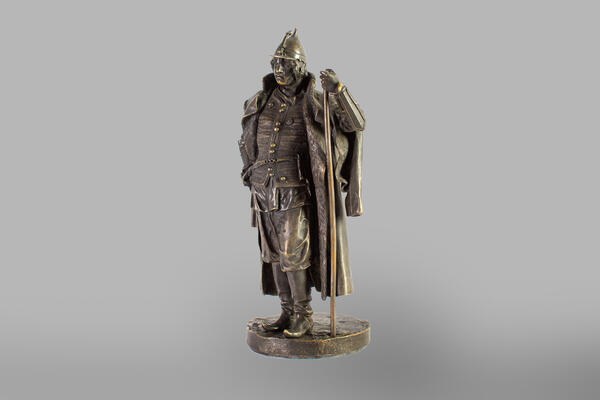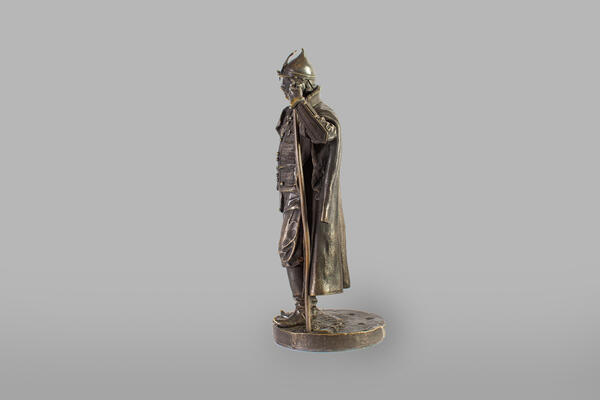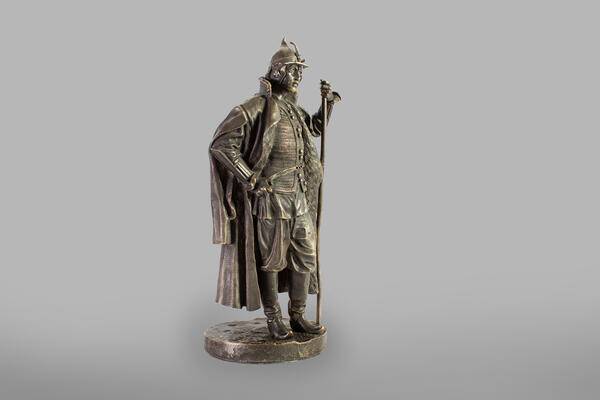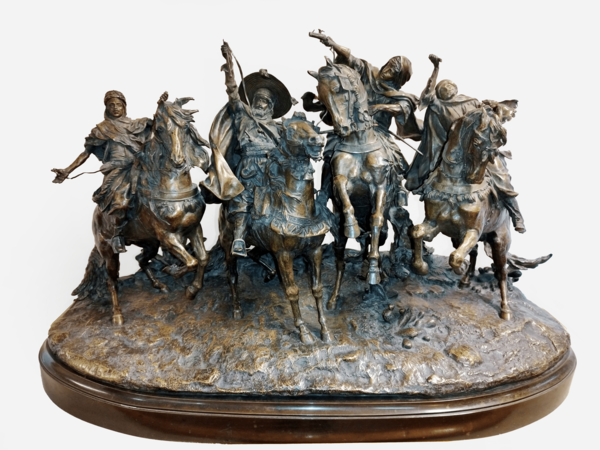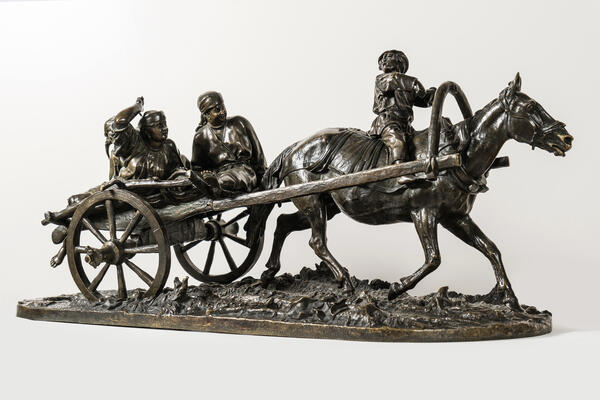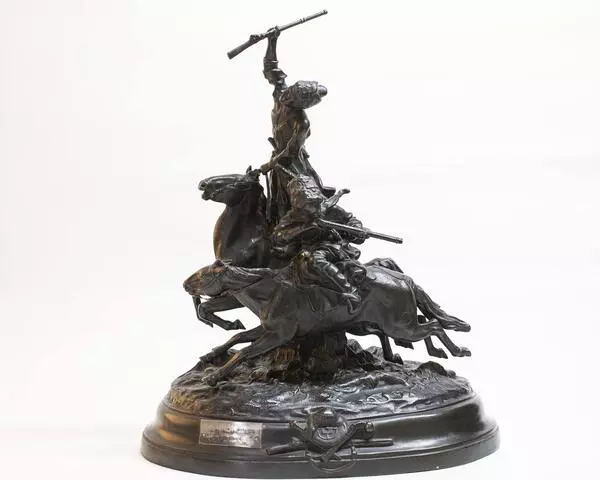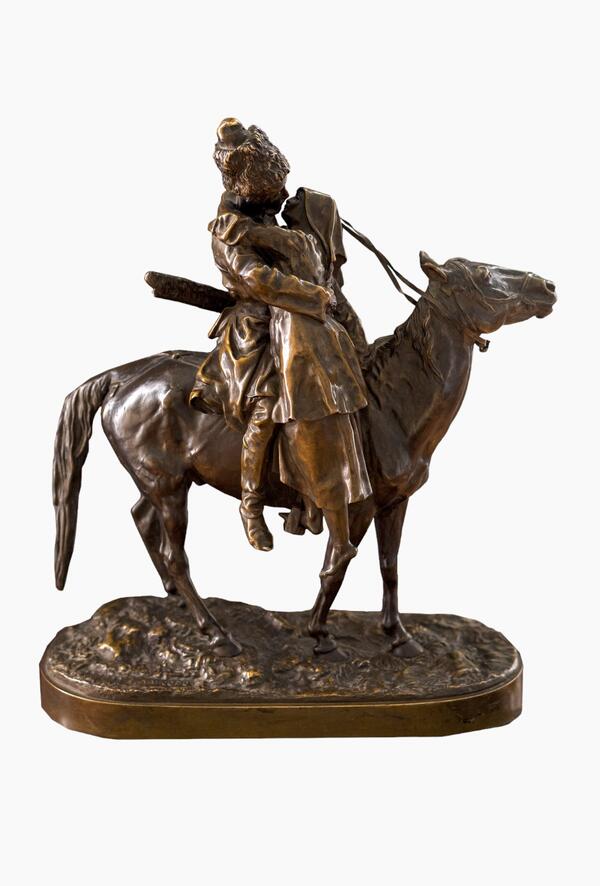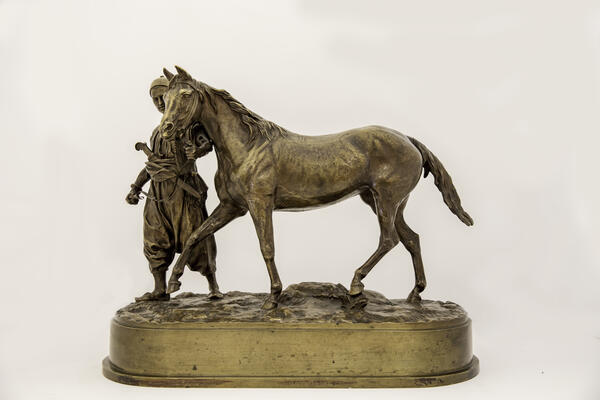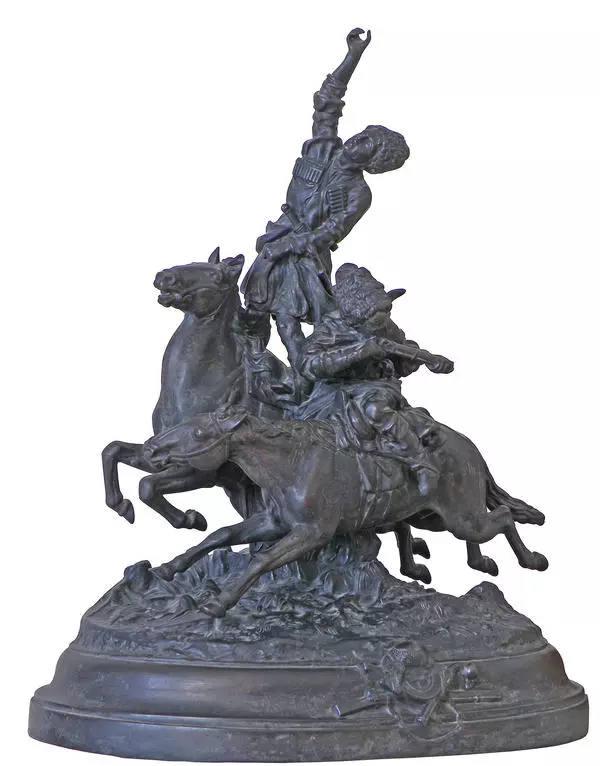The Tambov Art Gallery houses a sculpture called “Vityaz” (a Russian word for “a knight”), made by the Russian realist sculptor Yevgeny Lanceray.
Remarkably observant by nature, Lanceray created numerous figurines, which enjoyed great success and set an example for small indoor sculpture. In his early years, Lanceray gravitated toward a certain romantic mood. This fascination was expressed in the images of dashing Cossack riders, Circassians, and others, the feeling of elevation in these images, the impression of swift movement of the depicted animals, and the dynamic compositions. Later, by the 1880s, such sentimentality had given way to a quiet admiration of the life of common people and animals. The themes of Lanceray’s works also became much more varied, now including various genre scenes, always interpreted with utter seriousness and at times — with humor, as well as historical plots, such as the sculpture “Vityaz”, presented in the collection of the art gallery.
The sculpture from the museum’s collection is a fragment of a clock composition with candelabra. The work entered the Tambov Art Gallery in 1983 from the collection of E. M. Donskaya. The sculpture “Vityaz”, like the vast majority of Lanceray’s works, is cast in bronze, which is a metal that can be easily processed (chiseled) and is the best material for casting small and detailed figurines and groups.
Even though Lanceray’s works largely reflected the tastes of his customers, they were copied and cast in large quantities. The casting took place at factories and bronze foundries of various private firms, which purchased Lanceray’s models directly from him and received the right to cast and sell his works for many years. As a rule, the quality of the casting was very high.
While speaking about the significance of Yevgeny Lanceray’s works, it is important to mention his interest in people’s way of life and the use of social undertones, which makes his work inseparable from the progressive direction that Russian art took in the second half of the 19th century.
Remarkably observant by nature, Lanceray created numerous figurines, which enjoyed great success and set an example for small indoor sculpture. In his early years, Lanceray gravitated toward a certain romantic mood. This fascination was expressed in the images of dashing Cossack riders, Circassians, and others, the feeling of elevation in these images, the impression of swift movement of the depicted animals, and the dynamic compositions. Later, by the 1880s, such sentimentality had given way to a quiet admiration of the life of common people and animals. The themes of Lanceray’s works also became much more varied, now including various genre scenes, always interpreted with utter seriousness and at times — with humor, as well as historical plots, such as the sculpture “Vityaz”, presented in the collection of the art gallery.
The sculpture from the museum’s collection is a fragment of a clock composition with candelabra. The work entered the Tambov Art Gallery in 1983 from the collection of E. M. Donskaya. The sculpture “Vityaz”, like the vast majority of Lanceray’s works, is cast in bronze, which is a metal that can be easily processed (chiseled) and is the best material for casting small and detailed figurines and groups.
Even though Lanceray’s works largely reflected the tastes of his customers, they were copied and cast in large quantities. The casting took place at factories and bronze foundries of various private firms, which purchased Lanceray’s models directly from him and received the right to cast and sell his works for many years. As a rule, the quality of the casting was very high.
While speaking about the significance of Yevgeny Lanceray’s works, it is important to mention his interest in people’s way of life and the use of social undertones, which makes his work inseparable from the progressive direction that Russian art took in the second half of the 19th century.


